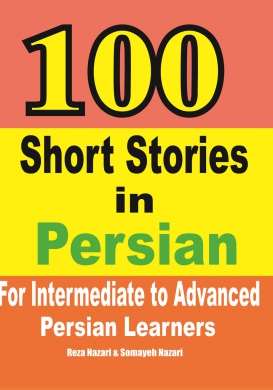
Cyrus II, better known as Cyrus the Great, was the founder and first imperial king of the Achaemenid dynasty, who ruled large parts of Asia between 559 and 529 BC.
In his youth, Cyrus first rebelled against the Medes, who were the kings of Iran, and then invaded and conquered the Median capital at Hegmataneh (modern-day Hamedan). After this, Cyrus founded the Achaemenid dynasty.

In 539 BC, Cyrus went to the battle of Babylon and finally conquered it. In the famous Cyrus Cylinder discovered in Babylon, Cyrus introduces himself as the son of Cambyses, the great king of Anshan. The Cyrus Cylinder was written after the conquest of Babylon and is a valuable historical document and witness.
In 1971, the United Nations published the Cyrus Cylinder in all official languages, and a replica of the cylinder was placed at the United Nations in New York City.
The tomb of Cyrus the Great is located about one kilometer southwest of Pasargad palaces in Fars province.

Cyrus the Great is known for his generosity, the founding of human rights, the founding of the world’s first multinational empire, the liberation of slaves, respect for Different religions, the spread of civilization, and so on. The Iranians called Cyrus the Great their father, and the Greeks, which Cyrus had conquered their lands, called Cyrus the Great their ruler and legislator. The Jews considered Cyrus the Great to be anointed by God, while the Babylonians considered Cyrus the Great to be approved by Marduk (One of the ancient gods of Babylonian civilization). He was the first Achaemenid king, that rule large parts of Asia between 559 and 529 BC.

Attractions and historical places of Iran:
Cyrus family
Cyrus the Great, chose a wife named Kasandan from the Achaemenid dynasty, from his wife he had four children. Two of the children of Cyrus the Great were boys and the other two were girls. The sons of Cyrus were named Cambyses II and Bardia, and one of his daughters was named Athosa, but in historical sources, the name of the other daughter of Cyrus the Great is not mentioned. After his father’s death, Cambyses II succeeded him to the throne and killed his other brother Bardia. He committed suicide on his way back to Iran after the conquest of Egypt.

The powerful era of Cyrus the Great
Cyrus the Great first fought against Ishtvigo, the king of the Medes, and then invaded the capital of the Medes in Hegmatane and conquered Hegmatane. Croesus then defeated the king of Lidi and marched on Saard, and two weeks later the city of Saard was occupied by Iranian forces. Cyrus left the responsibility of conquering other cities of Asia Minor to his commanders and returned to Ekbatan himself and went to “Parthia”, “Zarang”, “Herat”, “Khorezm”, “Bakhtar”, “Sughd”, “Gandar”, “Th-Tagush” And “Arkhovati” marched. The details of these battles are not recorded in history and little is known about the details of these battles.
With the defeat of the Medes by Persia, which was a puppet and subordinate state, the 35-year reign of Ishtvigo, king of the Medes, came to an end, but according to Herodotus, Cyrus the Great did not harm Ashtovigos and kept him. In this way, Cyrus the Great seized the kingdom of Media and Persia and proclaimed himself king of Iran.

Cyrus the Great, after uniting the Medes and Persians and calling himself the king of the Medes and Persians, while Babylon had betrayed him, wisely asked Croesus, the king of the Lidi, to recognize his rule, and in return Cyrus the Great, accept his kingship over Lidi.
But instead of accepting Cyrus the Great’s offer, Croesus thought of expanding the borders of his country, so he hurriedly crossed his troops across the Halsey River, which was the border between him and the Medes and Cyrus by seeing this hostile act, He moved his troops towards Lidi and the Saard fort, which was considered impregnable. With the ascent of the Iranian soldiers from the wall of the castle, the castle was captured by the Iranians, and Croesus, King of Lidi, was captured by the Persians, and Cyrus the Great extended his border to the Roman Sea and the Greek country.

The remarkable thing about the behavior of Cyrus the Great after the defeat of Croesus is that Cyrus did not kill or humiliate the defeated king of Lidi, even lived under Cyrus’ protection for the rest of his life, and the Saard people were pardoned despite fighting the army of Cyrus the Great for about three months.
After Lidi, Cyrus the Great conquered the eastern regions one after another.
The main purpose of Cyrus the Great’s campaign to the east was to provide security and consolidate the situation, otherwise, there would have been no government in the east of Iran at that time that could fight with Cyrus the Great. Cyrus the Great doubled the size of his subordinate lands by subjugating the eastern regions of Iran.

Charter of Cyrus the Great
The only relatively detailed document of Cyrus the Great is a 22.5 cm long and 11 cm wide cylinder of clay with 45-line inscriptions in the Babylonian language, which is now housed in the Ancient Iran section of the British Museum.
The main part of the cylinder of Cyrus the Great was found in 1879 by Hormuzd Rassam during the excavation of the temple of Marduk in Babylon. This part of the charter of Cyrus contained 35 lines. The second part of the charter of Cyrus the Great, which contains lines 36 to 45, was found in the Babylonian Collection of Yale University in 1975 and was attached to the original charter.
In 1971, the United Nations published the Charter of Cyrus the Great in all the official languages of the United Nations, and a copy of the Charter was placed at the United Nations headquarters in the space between the main hall of the Security Council and the Hall of Trustees in New York City. In this place, there is an example of cultural monuments of different countries.

Mausoleum of Cyrus the Great
The mausoleum of Cyrus the Great was located about a kilometer southwest of the palaces of Pasargadae. This work was inscribed on the UNESCO World Heritage List in 2004 as a subset of Pasargadae.
The mausoleum of Cyrus the Great is located on a high platform, which itself is made of carved pieces of stone. At the top of the platform is a burial room. Its entrance is a small and narrow entrance. The mausoleum is covered with gabled stones like a triangle, the full height of the building is about 11 meters.
The mausoleum of Cyrus the Great, which was probably built before his death and by his own order, was considered sacred throughout the Achaemenid period and was well preserved. In the Islamic period, this building was known as “the place of martyrdom of Solomon’s mother” and the first person to discover the place of martyrdom of Solomon’s mother was the tomb of Cyrus the Great, Robert Carporter was a tourist and English diplomat who visited Pasargadae in 1818.

Monuments and palaces of Cyrus the Great
Most of the Monuments built by Cyrus the Great are located in the Pasargadae area. The Mausoleum of Cyrus the Great, which was built by Cyrus himself, is so special in terms of the design and use of landscaping in the middle of the great garden of Pasargadae with the Darvazeh palaces, that it turns out that all of them were designed by one person and palaces was the result of the design of Cyrus. The trilingual inscriptions of Elamite, Persian, and Akkadian on the rafters and gates of the three palaces are another confirmation that these palaces were built by Cyrus the Great.
The main body of the palaces of the kingdom of Cyrus the Great in Pasargadae consists of columned halls. The public hall was built around 539 BC. Its columned hall has two rows of four columns and the residential palace of Cyrus the Great was built between 530 and 535 BC. The palace’s columned hall has five rows of columns and six columns in each row.
The Darvazeh Palace is located the east of the main courtyard and consists of a columned hall with a quadrangular plan and 8 rows of columns.

Special Offers
by: Reza about (category: Blog)

















What people say about "Cyrus the Great"?
No one replied yet.